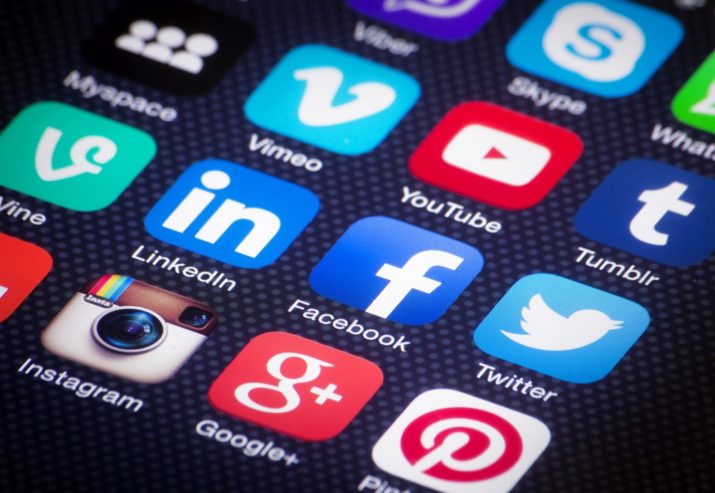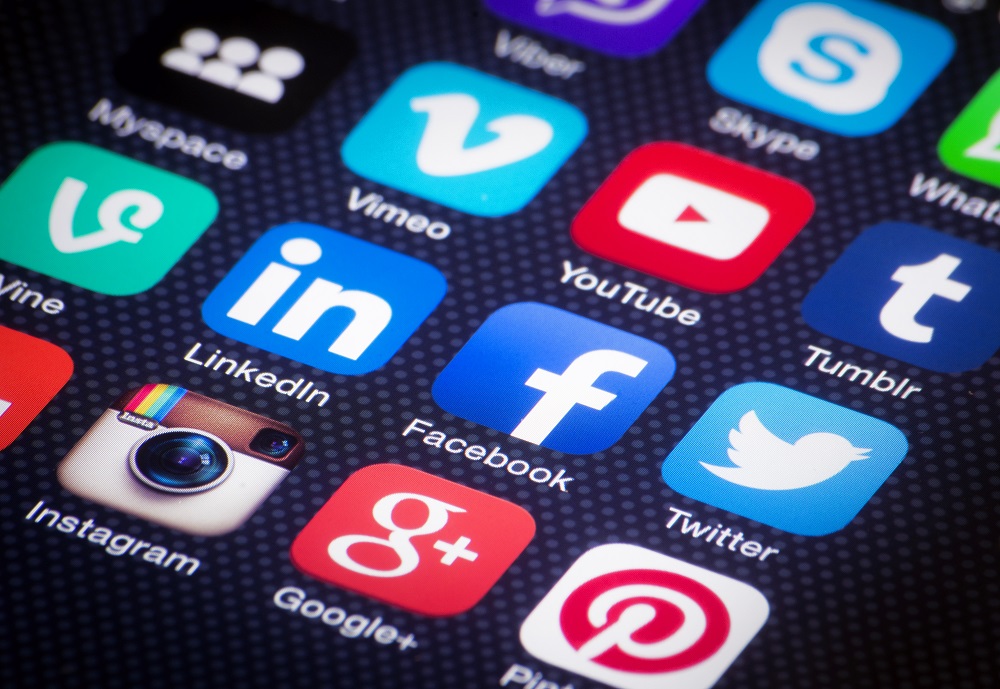

This is part of our special feature on Anxiety Culture.
You’d slip and blame me
When you came to, and couldn’t accept
Our anxious hope with no household god or
Harpist’s Haven for hearty climbers.
So fluke through unflustered with full marks in
House-geography: let history be.
W.H. Auden
“The Age of Anxiety” (1947)
At the beginning of our contemporary societies, Soren Kierkegaard in 1843 wrote his seminal book “The Concept of Anxiety.” Kierkegaard, with his sharp analytical mind, and ability to build from concepts of the initiator of modern philosophy (Immanuel Kant), recognizes anxiety as an expression of human freedom, of the self-awareness of our ethical choices. According to Kierkegaard, “The whole actuality of knowledge projects itself in anxiety,” and, ultimately, anxiety as a positive impulse has the strong capacity to steer humans towards ethical living, pulling them away from sin. From this point of view, anxiety could be presented as a “positive” emotion that can help humans to be more self-conscious and ethical in their decisions and actions[1].
Twenty-five years later, in 1869, a young New York-based doctor, George Miller Beard, coined a new medical term: neurasthenia (from neuro for “nerve” and asthenia for “weakness”). Dr. Beard identified neurasthenia as a “nervous exhaustion,” primarily affecting ambitious individuals from the middle and upper classes of urban America. Dr. Beard attributed neurasthenia as the result of the overtaxed nervous system of individuals attempting to achieve more than what they could cope with. The rapid changes and the striving nature of modern American society were the clear conduits for neurasthenia. Anxiety was one of their symptoms[2].
Forty years later, in 1895, Sigmund Freud developed the term “anxiety neurosis,” first connecting it to the mere fact of being born. “The act of birth is the first experience of anxiety.” Over the years, Freud further developed his ideas and etiological theories around diverse types of anxiety, ultimately identifying two modes of origin to anxiety. “One was involuntary, automatic and always justified on economic grounds, and arose whenever a danger situation was established. The other was produced by the ego as soon as a situation on this kind merely threatened to occur, in order to call for its avoidance.” “We might say -Freud said- that a person protects himself from fright by anxiety.”[3]
Fifty years later, two books were published almost simultaneously, where the topic(s) of anxiety took significant place. In 1951, Alan Watts published The Wisdom of Insecurity: A Message for an Age of Anxiety and, in 1952, Paul Tillich published The Courage to Be. Tillich distinguishes three types of anxiety: that of fate and death (ontological); that of guilt and condemnation (moral); and that of emptiness and loss of meaning (spiritual). Tillich notes that the three types of anxiety are particularly relevant in different periods of Western history: “At the end of ancient civilization ontic anxiety is predominant, at the end of the Middle Ages moral anxiety, and at the end of the modern period spiritual anxiety.”[4] Watts focuses on the spiritual anxiety, underscoring that the anxiety prevalent in our times is not related to insecurity. “Our age is no more insecure than any other. Poverty, disease, war, change, and death are nothing new. In the best of times “security” has never been more than temporary and apparent”[5]. The key to anxiety in our times, Watts says, is the deep feeling that there is “no future” (either in the world after our demise, or in the planet we inhabit), and this lack of a future is perceived as the ultimate lack of hope. Watts and Tillich coincide in pointing that the feeling of spiritual vacuity (no future, no hope, no redemption) is the crucial source of our contemporary anxiety. Each gives a different antidote; Watts (practicing Buddhism Zen) ask us to move beyond our need for religious believe and to open our mind to the strength that emanates from the mystery of not believing. Tillich (it could be argued that following Kierkegaard’s “optimism”) invites us to have the courage to self-assert ourselves. “The courage to be is rooted in the God who appears when God has disappeared in the anxiety of doubt.”
In 1960 Elias Canetti, in his encyclopedic Crowds and Power, pays particular attention to what he coins as the “anxiety of command.” Bordering in paranoia, in the fear that the strong ruler grows concerning the retaliation of his subjects, the anxiety of command can lead to madness, as it certainly did to several Roman rulers. “To free him from the anxiety of command what is really necessary is that not only his enemies should die, but also many of those who fight for him. The forest of his fears has grown so dense that he cannot breathe and he longs for it to be thinned (…) The anxiety of command increases in him until it results in catastrophe. But before catastrophe overtakes him it will have engulfed innumerable others”[6].
Year 2018. According to the Anxiety and Depression Association of America (ADAA), anxiety disorders are now the most common and pervasive mental disorder in the USA. ADAA understands as “anxiety disorder” the specific psychiatric disorders that involve extreme fear or worry. 42 million Americans are afflicted by it, 40 percent of American adults have experienced anxiety disorder at some points in their life[7]. A recent study published by the Center for Diseases Control, indicates that there is a correlation between anxiety disorder, depression and suicide, the study points that the rate of suicides in the USA have increased by nearly 30 percent since 1999[8]. Although the USA seems to have the larger percentage of individuals with anxiety disorders, these are not only “American problems.” According to a 2017 study of the World Health Organization, globally more than 300 million people suffer from depression, and 260 million suffer from anxiety disorders—many of whom live with both conditions[9].
Many studies point out that young people are the largest segment of the population being afflicted by depression and anxiety disorders. Jean Twenge, author of Generation Me: Why Today’s Young Americans Are More Confident, Assertive, Entitled –and More Miserable Than Ever Before, rightly remarks that the words “depression” and “anxiety” could mean different things at different times. To properly make correlations applied to different times, she looked for the symptoms (such as trouble falling asleep, feeling well rested, having trouble thinking, etc.) over the period of 1940 through 2010, using the Minnesota Multiphasic Personality Inventory (MMPI) which has been administered to high school and college students since the 1930s. Twenge also consulted the “Monitoring the Future” (MtF) survey, a nationally representative sample of USA twelfth graders administered every year since 1976. Both studies underscore that the symptoms of depression and anxiety have clearly increased in the last 40 years. Twenge concludes by affirming that “the research tells us that modern life is not good for mental health (…) There is clear evidence that the focus on money, fame, and image has gone up (causing youth) more likely to be depressed and anxious”[10]. It could be argued that Twenge echoes here George Miller Beard, when, in the late 1800s, he coined the medical term “neurasthenia” and connected its symptoms to the modern life style of American middle and upper classes.
Many studies and experts are pointing that the main reason of the increase of anxiety in our society (particularly in youth, but not only) are the uses we are making of contemporary media, in particular of social media. We are addicted to social media. We feel the urgent need to be connected at all times. We feel lost otherwise. We feel awkward when we are left alone in silence with only our thoughts for company. To illustrate this, Timothy Wilson and others designed a test with hundreds of their undergraduate students at the University of Virginia. The students were asked to put aside their mobile phones and to stay alone in a bland lab room for 15 minutes, just by themselves without any distraction. They were given the choice of inflicting themselves a mild electroshock if they felt the need of an external “distraction.” 67 percent of men and 25 percent of women chose to inflict the electroshock to themselves[11]. Self-reflection makes us uneasy; we need our “shot” of social media distraction.
Many researchers coincide in pointing out that this addition to social media is not accidental, that it has been designed as part of the economic strategies of the social media platforms from their inception. The corporations running the platforms need our attention as long as possible so they can extract as much data from us as possible -and then selling this data to third parties (mostly advertisers, but not only). Researchers such as Natasha Dow Schull, author of Addiction by Design, draw correlations between social media addiction and the designed gambling addictions put in place to hook gamblers into Las Vegas slot machines. Her research reveals that gamblers aspire to enter the “zone,” where winning is no longer the most important outcome, but just being in the game; “a kind of state in which you lose worldly being, you loose a sense of clocked time, a sense of physical space”[12].
Some sort of “zone” is precisely what social media (Facebook, Instagram etc.) provides. It is obviously a complex phenomenon with many and multifaceted variants, but research clearly points to the fact that a large portion of young people is addicted to social media and that this is causing anxiety disorders in them. A phenomenon such as the “Fear of Missing Out” (FoMO) is one of the evident symptoms of social media addiction. FoMO is identified as “a social anxiety, characterized by a desire to stay continually connected with what others are doing (it is) perceived to have negative influences on people’s psychological health and well-being because it could contribute to people’s negative mood and depressed feelings (by facilitating) the apprehension that one is either not in-the-know or is out of touch with some social events, experiences, and interactions”[13]. It could be argued that the “FoMO anxiety” has always been part of the experience that individuals (particularly youth) encounter in their lives, but social media exacerbates it to levels that ultimately affect the general well-being and mental health of individuals addicted to social media.
Another phenomenon that social media addiction exacerbates is “the pleasure of being the cause.” As one of the very foundations of our being, Karl Groos in his 1901 book The Play of Man first noticed by observing infants that they expressed extraordinary happiness when they first discover their ability to cause predictable effects in the world[14]. It could be argued that social media addicts are experiencing pleasure when they are the first ones announcing on FB some event, sharing a news story on Twitter, an awesome picture on Instagram, etc. They need that pleasure, they have the addictive urge to share and be the cause.
The recent report “Social Media and Young People’s Mental Health and Wellbeing” by UK’s Royal Society for Public Health[15], clearly signals out that:
- 91 percent of 16-24 year olds use internet for social networking
- Social media has been described as more addictive than cigarettes
- Rates of anxiety and depression in young people have risen 70% in the past 25 years
- Social media use is linked with increased rates of anxiety, depression and poor sleep
Over the last few years, many studies, papers, and articles have been published around the topic of the negative impact of social media in youth’s health, particularly when addressing anxiety disorders, depression and suicide. The very well-researched article “Increases in Depressive Symptoms, Suicide-Related Outcomes, and Suicide Rates among U.S. Adolescents After 2010 and Links to Increased New Media Screen Time” reports some relevant studies linking Facebook usage to depressive symptoms. The article is conclusive: “Adolescent mental health issues rose sharply since 2010, especially among females. New media screen time is both associated with mental health issues and increased over this time period. Thus, it seems likely that the concomitant rise of screen time and adolescent depression and suicide is not coincidental”[16].
The societal challenges and political repercussions of social media have been highlighted ad infinitum across the world, particularly after President Trump’s successful campaign towards the White House. George Soros in a recent op-ed article writes “There is a similarity between Internet platforms and gambling companies (…) Something similar –and potentially irreversible- is happening to human attention in our digital age. This is not a matter of mere distraction or addiction; social media companies are actually inducing people to surrender their autonomy. And this power to shape people’s attention is increasingly concentrated in the hands of a few companies. (…) This would have far-reaching political consequences. People without the freedom of mind can be easily manipulated”[17].
The societal harm and mental health crisis that digital platforms and social media are causing in our communities has been acknowledged by Silicon Valley. Many articles are echoing these concerns, such as Olivia Solon’s piece in The Guardian earlier this year “Former Facebook and Google workers launch campaign to fight tech addiction”[18]. Foundations and centers to address these challenges and propose solutions have been created; one in particular is The Center for Humane Technology, led by Tristan Harris, former Google design ethicist, and Roger McNamee, former Facebook investor and adviser. The statement in the center’s website reads: “Our society is being hijacked by technology. What began as a race to monetize our attention is now eroding the pillars of our society: mental health, democracy, social relationships, and our children”[19].
These concerns are publicly echoed by powerful individuals who helped build the platforms of the Internet’s social media industry. Sean Parker, the former president of Facebook, and Justin Rosenstein, an engineer who helped build Facebook’s “like” button, have both expressed regret about having taken an active part in developing a technology that they now consider psychologically damaging. But as Moira Weigel and Ben Tarnoff noted in their recent article “Why Silicon Valley can’t fix itself,” published in The Guardian on May 3rd this year, these efforts of the “tech humanists” to “maximise the tech industry’s contributions to a healthy society” (as Pierre Omidyar , the founder of eBay, indicated) will ultimately strengthen the power of the few tech companies controlling (and cashing in) the already existing social media platforms. Facebook’s “Time Well Spent” initiative also aims at maximizing the monetizing of the social media platform but in a “healthy” manner. “Today’s tech humanists come from a tradition with deep roots in Silicon Valley. Like their predecessors, they believe that technology and humanity are distinct, but can be harmonized. This belief guided the generations who built the “humanized” machines that became the basis for the industry’s enormous power. Today it may provide Silicon Valley with a way to protect that power from a growing public backlash –and to even deepen it by uncovering new opportunities for profit-making”[20].
Weigel and Tarnoff state in the last sentence of their article, “Never before have so many people been thinking about the problems produced by the tech industry and how to solve them. The tech backlash is an enormous opportunity—and one that may not come again for a long time. The old techno-utopianism is crumbling. What will replace it? Silicon Valley says it wants to make the world a better place. Fulfilling this promise may require a new kind of disruption.”
Building on Kierkegaard’s understanding, “anxiety” is an opportunity for reflection and ethical behavior. Perhaps we can take the opportunity that the current “Internet anxiety” is offering as an urgent invitation to reconsider contemporary society at large. But, perhaps, the positive ethical behavior that may come out of our contemporary Internet anxiety may require a new kind of disruption, as Weigel and Tarnoff suggest. Perhaps it requires a political disruption that will question the whole system put in place by modern corporations focusing on economic gain as the ultimate goal for humans.
As Karl Marx and Friedrich Engels detailed in their Manifesto of the Communist Party, “The bourgeoisie cannot exist without constantly revolutionizing the instruments of production, and thereby the relations of production, and with them the whole relations of society (…) All fixed, fast-frozen relations, with their train of ancient and venerable prejudices and opinions, are swept away, all new-formed ones become antiquated before they can ossify. All that is solid melts into air, all that is holly is profaned, and man is at last compelled to face with sober senses his real conditions of life, and his relations with his kind”[21].
Let’s build a new society, more ethical and self-reflective, out of the anxiety of our times.
After obtaining a degree in Philosophy at the University of Barcelona, Jordi Torrent followed graduate studies in Paris at the Sorbonne University (Film Esthetics) and at the Ecole Pratique des Hautes Etudes (Anthropology Filmmaking). From 1985 to 1990 he was Media Curator at Exit Art in New York. He was Media Educator Consultant for the Department of Education of New York City from 1990 to 2007, where Torrent created Media Literacy Education programs as well as conducted media education workshops for educators and parents. From 2004-2008 he was co-director of “Overseas Conversations,” a series of international conferences focusing on youth, media and education. Since 2007 Torrent manages Media and Information Literacy Education initiatives at the United Nations Alliance of Civilizations (UNAOC). Mr. Torrent has published articles at El País, Liberation, El Mon, Video Actualidad, and Casablanca, among other publications. He has co-edited, among other publication, “Mapping Media Education Policies in the World,” “Youth Media Voices: Conversations Across Cultures,” and “Opportunities for Media and Information Literacy in the Middle East and North Africa”. As a media maker, Torrent has written, produced and directed, television programs, documentaries and feature narrative films.
Photo: HILVERSUM, NETHERLANDS – APRIL 03, 2014: Social media are trending and both business as consumer are using it for information sharing and networking. Showing social media icons on smartphone.
References:
[1] See: http://sorenkierkegaard.org/concept-of-anxiety.html
[2] See: http://exhibits.hsl.virginia.edu/nerves
[3] “How Freud Arrived at the Origin of Anxiety”, see: https://www.rscpp.co.uk/article/20/freud-anxiety.html
[4] See: http://people.bu.edu/wwildman/tillich/resources/review_tillich-paul_couragetobe.htm
[5] See: https://antilogicalism.files.wordpress.com/2017/07/wisdom-of-insecurity.pdf
[6] See: http://shifter-magazine.com/wp-content/uploads/2015/02/canetti_crowdsandpower.pdf
[7] See: https://adaa.org
[8] See: https://www.cdc.gov/mmwr/volumes/67/wr/mm6722a1.htm?s_cid=mm6722a1_w
[9] See: http://apps.who.int/iris/bitstream/handle/10665/254610/WHO-MSD-MER-2017.2-eng.pdf;jsessionid=D6BAC669E803FF022A508AD78FCAC6D1?sequence=1
[10] See: https://www.thecut.com/2016/03/for-80-years-young-americans-have-been-getting-more-anxious-and-depressed.html
[11] See: http://www.sciencemag.org/news/2014/07/people-would-rather-be-electrically-shocked-left-alone-their-thoughts
[12] See: http://ethnographymatters.net/blog/2015/02/09/the-addiction-algorithm/
[13] See: https://en.wikipedia.org/wiki/Fear_of_missing_out
[14] See: https://archive.org/details/playofman00groouoft
[15] See: https://www.rsph.org.uk/our-work/campaigns/status-of-mind.html
[16] See: http://journals.sagepub.com/doi/abs/10.1177/2167702617723376?journalCode=cpxa
[17] See: https://www.project-syndicate.org/commentary/social-media-security-threat-by-george-soros-2018-02?barrier=accesspaylog
[18] See: https://www.theguardian.com/technology/2018/feb/05/tech-addiction-former-facebook-google-employees-campaign
[19] See: http://humanetech.com/problem/
[20] See: https://www.theguardian.com/news/2018/may/03/why-silicon-valley-cant-fix-itself-tech-humanism
[21] See: https://www.marxists.org/archive/marx/works/download/pdf/Manifesto.pdf
Published on July 2, 2018.




